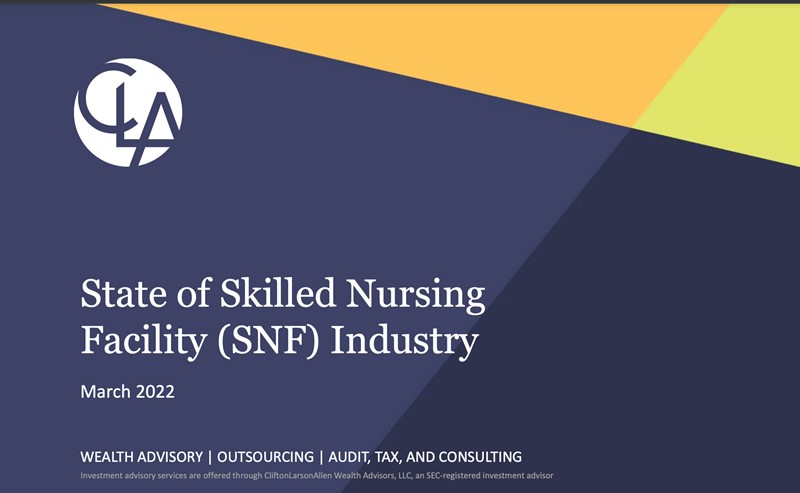
WASHINGTON, D.C. – The American Health Care Association (AHCA) today released a new report outlining the financial impact of the COVID-19 pandemic on the nation’s nursing homes. The report, produced by CLA (CliftonLarsonAllen LLP), highlights that the cost of care and other operations in nursing homes is far exceeding their reimbursement rates, resulting in a projected 4.8 percent negative margin. The industry is also facing a historic workforce crisis and significant declines in occupancy as a result of the pandemic. The unprecedented challenges have resulted in reduced access to care for seniors and individuals with disabilities across the country.
Key findings from the report include:
- Increasing Costs Due to Labor and Inflation: The CLA report found that average increase in wages for nurses at all levels doubled from 2020 to 2021. Rates for contracted and agency nurses are also two to three times higher than pre-pandemic rates.
- Negative Margins: CLA projects the median 2022 year-end operating margin to be -4.8 percent with a median occupancy of 77.3 percent. This projection is based on maintaining the current Patient-Driven Payment Model through Medicare and state public health emergency (PHE) funding levels. The CLA report emphasizes that any reduction in reimbursement could deepen financial issues for the long term care sector.
- Increased Risk for Closures: The CLA report found that 32 to 40 percent of residents (as many as 417,000 residents) are currently living in nursing homes that are considered financially “at risk” – including buildings with Five-Star quality ratings.
- Challenges with Access to Capital: Medicare margins and PHE related funding provided help and support throughout 2020 and early 2021, but potential cuts to these programs pose risk to nursing homes as they continue to face financial challenges such as occupancy decline, staffing shortages, and increased labor costs.
“When you look at the big picture and everything that nursing homes are facing both pre-pandemic and today, it’s a major cause for concern,” said AHCA President and CEO Mark Parkinson. “When nursing homes struggle to stay afloat, it is our vulnerable residents who need around-the-clock care that ultimately lose. Long term care needs government resources to address staffing shortages and ensure access to care for our nation’s seniors. That means we require immediate assistance to respond to the current crisis, and we must have a stable and sustainable reimbursement system moving forward.”
Parkinson recently sent a letter to Congressional leadership, requesting that federal lawmakers replenish the Provider Relief Fund with $20 billion allocated to the long term care sector. The fund has been depleted, but only aided providers through the end of the first quarter of 2021, despite new COVID variants—Delta and Omicron—causing havoc on the nation’s health care systems last year and in early 2022.
“This report is a comprehensive view of the current financial state of the nursing home industry,” said Deb Emerson, Principal at CLA. “You cannot simply look at one piece of the puzzle, such as Medicare payments. Inflation, labor costs, COVID resources – all of these have a significant impact on the ability of nursing homes to continue providing care to their patients every day.”
The full CLA report is available here.


